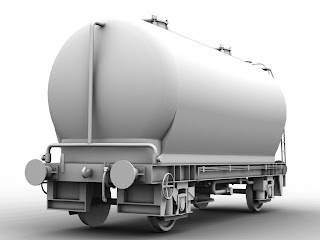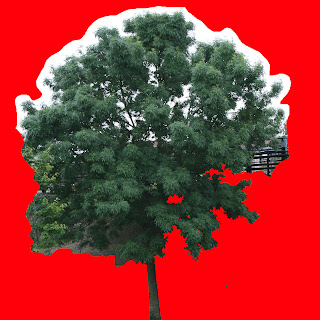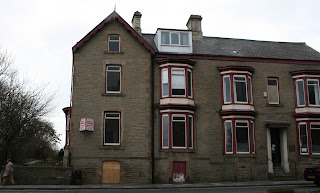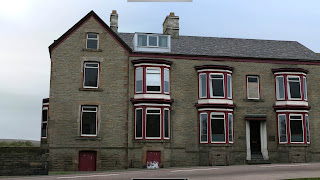Friday 31 July 2009
How Long?
I have mentioned this before but I am happy to explain this in a little more detail.
It does depend on the loco but this is a rough guide for an RS.com artist. (Steam locos tend to take longer)
Man day = 6 hours at least 1 hour a day is spent making tea and chatting about biscuits just to upset those that don't like us talking about biscuits.
1 - day photography research trip
1-2 days internet/email research
Loco
0.5 day setting up plan views and scale
5-10 days modelling
3-5 days unwrapping
2-4 days texturing
1 day per skin
1 day details
1 day shadow model
1 day loding
2-3 days setting up xml and testing performance
Cab
5-10 days modelling
3-5 days unwrapping
0.5 day shadow model
2-4 days texturing
1 day animating/testing
1 day setting up xml
So, a loco can take between 200 and 300 hours to make and that is by a proffessional model maker with many years worth of experience. (with help from a SME) It is only a guide and some locos take less and some much more, there are a few rather large locos in development that almost double this time.
Also, the above has not mentioned the sound recordings, scenarios, testing, marketing or other rollingstock that might go with it.
Derek
Heading North
No real plan, but I hope to gather images of places I've missed, King James School could be a good one to document, along with cockton Hill as it sat right next to the track on the West Auckland Branch.
Hope to share some images with you next week.
On a footballing note it is a very sad day, the game has lost a real northern gentleman, Sir Bobby Robson.
Derek
Wednesday 29 July 2009
Wagon models
Last week I set about making a few of the many wagons/coaches/vans/cars (whatever you want to call them) that need to be made for various future consists.
Here are two models I've fleshed out, a straight PCA and an OCA.


Derek
Thursday 23 July 2009
FF Trees
Always try and take your photos on an overcast day, strong sunlight is no good for making textures. This can be a pain, but the results are so much better in game. (images are reduced in size on this blog, the originals are much higher res)

From the photograph I crop the image so that it is square with the tree as central as I can make it.

If you still have a white pixels around your tree from the sky I reduce this further by selecting the red and expanding the selection by 1 pixel. this can take parts of the tree away that you wanted to keep but you can always do this in layers and keep the original.
Once you are happy with the cut out, select the red and replace the red with a more suitable green and brown around the stump this is for the mips so that you do not get a halo around the tree. Still with the selection on create an alpha channel from that selection.
Save as a . ace and export from depot.
Monday 20 July 2009
Stumped
Started the long task of changing all the tree textures from the IOW and the foliage pack.
Once again I have spend the odd hour here and there wandering around woodlands.

Flickr
Just a quick post to remind those intrested to keep one eye on the flickr link from RS.com
http://www.flickr.com/photos/railsimulator/
Many of our research pics are going up and for those of you who like me enjoy engineering detail shots then you are in for a treat, to normal people it just looks a tad sad.
:)
Derek
Saturday 18 July 2009
3 is the magic number
Tuesday 14 July 2009
1 Cockton Hill Road


The building on the corner of the Rail Bridge, 1 Cockton Hill road. As a lad I use to deliver newspapers to this building, I also had a mate who left me an extra pint of milk here every morning. (I love ice cold Milk)
Ok, this building has a 1024/1024 texture on it. I will leave for the time being (I can always reduce back to 512/512 later if need be) as it is close to the track. The buildings alongside it will not be so high res. Hopefully the change in res will not be to noticeable.
Sunday 5 July 2009
prototype and fictional?
Just as my wife prepares to leave me home alone for another week to look after our daughter and cat I found just enough time to post a few of my thoughts on this topical subject.
One thing is for certain, no 2 people think alike when it comes to creating routes.
Creating a route is a labour of love no matter which package you use (speaking from experience), it's normally easier to create a fictional route when you do not have to spend hours and hours finding and checking reference images to make sure you have it just so. It also prevents thoughs who like to point out something is wrong from commenting.
However, fictional routes need creative thinking. The 3 Fictional routes in RailWorks are all based on real areas with their names changed. This allowed us to lay the track fairly quickly, it also helped us to define areas for scenery and activities.
Taking a real section of track and moulding it to your needs is a great starting point and I'd strongly recommend it to anyone who was serious about creating a route.
For me though, I'm not interested in spending my time making a fictional route (unless it was on the moon or Mars, that way you really could let your imagination go!)
I started my route for very different reasons; I did not do it for others to play, I did it for myself.
My plan was and still is to create a number of large oil paintings of the station complex. I've spent hundreds of pounds researching it and many thousands of hours reading/searching and drawing little areas so I can get an idea of where everything was.
Some areas of Bishop have changed so much that you'd never know what was there, very few books document the recent past, there are not that many pictures around and so few seem to even remember what it was really like.
So for me the devil is in the details. I want the right building in the right place to the right scale.
Now, I'll get some bits wrong and some others I'll have to make a best guess from the pictures and text I have. However the beauty of this is I can always update it.
I am currently making oak terrace, it is seen in many of the photos of Bishop Station and it is still there so I have no reason to get it wrong, however it has been a chore organising the photo to make a 512/512 texture.
Here is a sneak peak of the wip. (Hopefully put up the final image in the next day or so)





